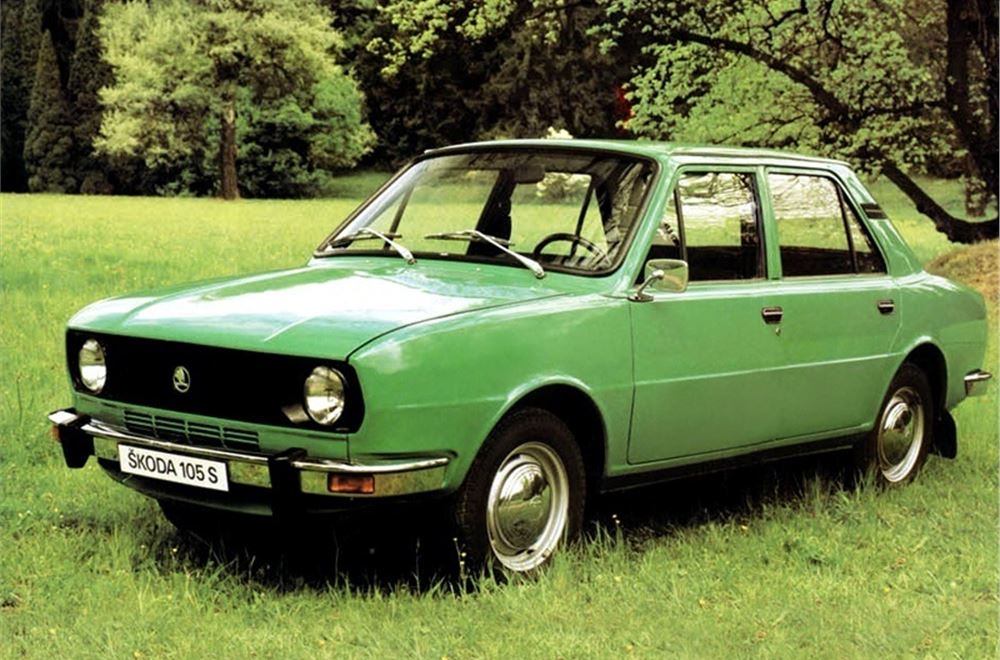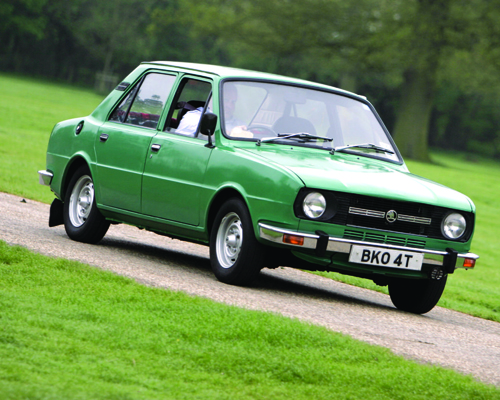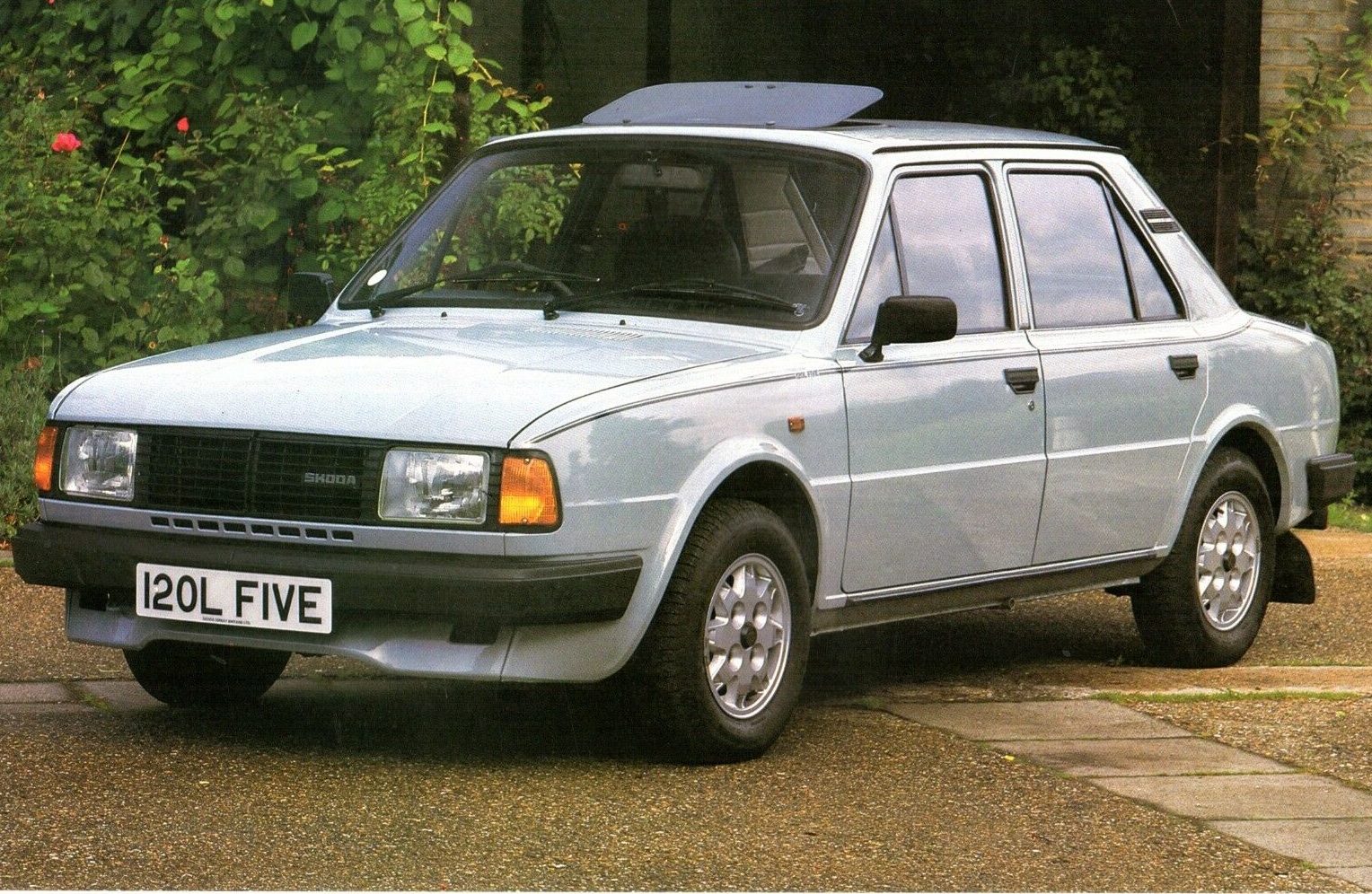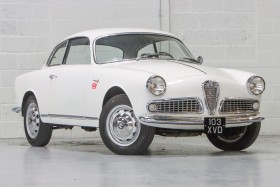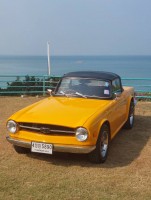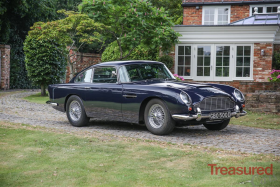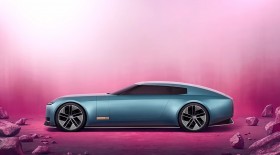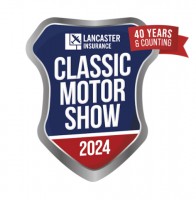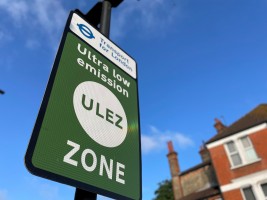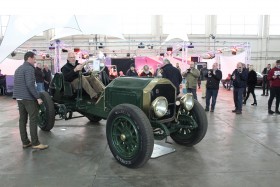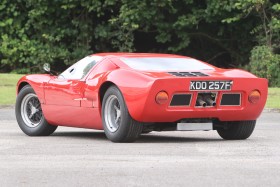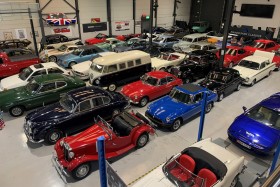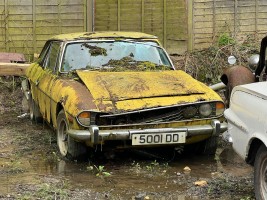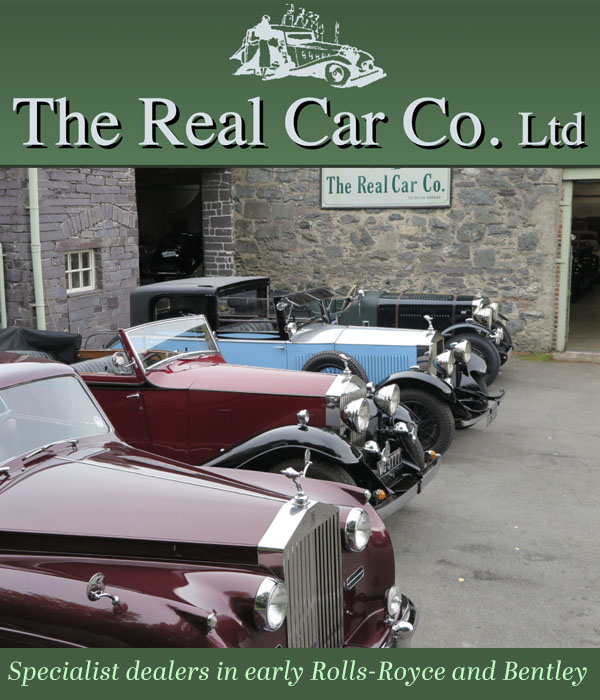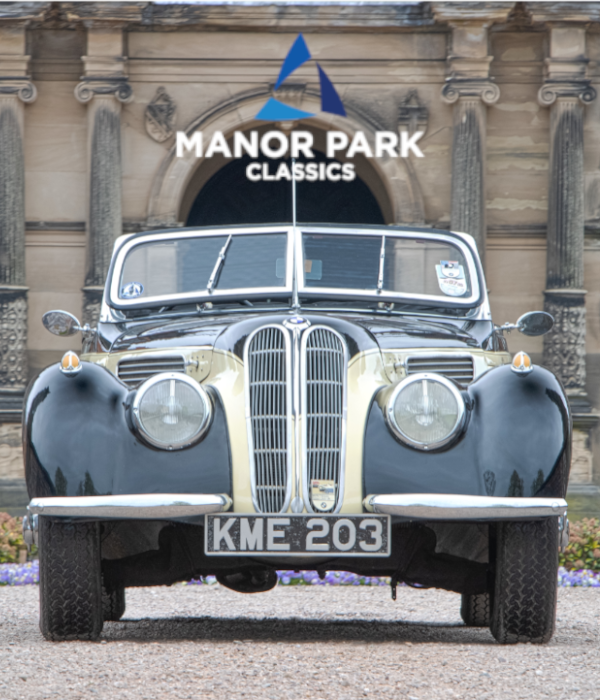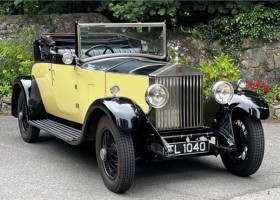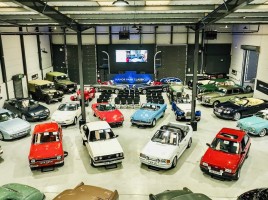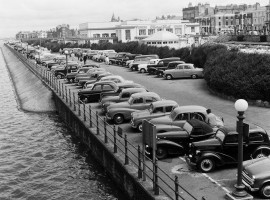the very successful skoda 1000mb 443141 produced followed by 1136775 s100 and 110s and 2013695 estelles
Seen at the Classic Motor Show 2021 The charm of the rear-engined Skodas.
By: Terry Burgess Sat, 20 Nov 2021
Features
Yes, those production figures are correct; nearly 3.6 million rear-engined Skodas were produced from 1964 to 1990. Surely 3.6 million buyers couldn't be wrong? Of course there were less buyers than that, because many were repeat customers, buying a new one every few years during that 26-year run. In its native Czechoslovakia there was admittedly a limited choice of cars for sale in its price range. If you look at communist-era photographs of Prague traffic, you will see plenty of Skodas and a few Wartburgs, Ladas, Moskvitches, Polski-Fiats (FSOs), Zaporozhets, Volgas and maybe the odd Zastava or Warsawa. Western-built cars were few indeed.
However, many Skodas were sold in Western Europe and in the UK, where they were very competitively priced. Here in the UK, Skoda jokes became popular after the introduction of the Estelle in 1976. The jokes, it has to be said, were of far poorer quality than the cars, which were actually rather well made. Even while the Estelle was still in production, Skoda's advertising reflected the negative image the company was trying to overcome, with straplines such as, 'Surprising Skoda'.
The factory at Mlada Boleslav, built especially to produce the 1000MB, was large and modern. Skoda's previous staple design, the 440/445/Octavia was front-engined and rear-wheel-drive. It continued alongside the rear-engined cars until 1971. It had succeeded the lovely Skoda 1200 pictured below, produced until 1956, and was mechanically very similar, with a backbone chassis and swing-axle rear suspension by transverse leaf-spring.
The decision to switch to a rear-engined design must be seen in the light of western developments after WWII. Volkswagens had taken the world by storm and the derivative Porsche sports cars were exotic. Fiat had two successful rear-engined designs in the 500D and 600D, and Renault's 4CV, Dauphine and Floride models were selling well and soon to be joined by the R8. Simca, with their Fiat connections, had introduced the 1000 4-door saloon and in Czechoslovakia itself the exclusive, limited-production Tatra 603 had a rear-mounted air-cooled V8. In Britain, the Rootes Group were to introduce their Hillman Imp in 1963 and in the US Chevrolet were producing the Corvair with a rear-mounted air-cooled flat-6. You could say that the configuration was fashionable. That Skoda were to continue with it until 1990 was more surprising, but that had much to do with restrictions placed upon the business by the Czechoslovakian government's political masters in Moscow, under the dictatorial Comecon system.
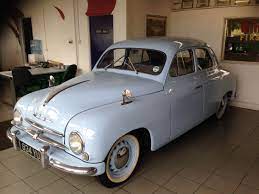
The 1000MB was soon on sale in Western Europe and the UK. It was considered by motoring journalists here to be quite a good car with competitive performance and notable economy. The roadholding and handling were judged to be generally satisfactory, although it was recognised that the tail-heavy car was prone to fairly severe oversteer characteristics if pushed too far. This wasn't considered scandalous; after all, the popular Volkswagen was just the same, as was Renault's Dauphine.
In fact, Skoda had received input from Renault in the design of their new model, although that didn't result in any interchangeability of components. It sold well and was facelifted, with tidier air intakes on the rear flanks, before being replaced in 1969 with the smoother but very similar S100 and S110 models. The S110 had an 1107cc engine rather than the 988cc unit fitted to the S100. It replaced the 1100MB model. An S110R Coupe joined the range in 1970, having a slightly more powerful version of the 1107cc engine and a unique instrument panel and interior. That model is highly prized today. It wasn't dynamically any better than the saloons, but, with its exquisite glasswork and attractive interior, it just looks great. The mid-seventies version, with extra inset lights and fake 'Fuchs' wheel covers, is a poor man's Porsche if ever there was one. It is pictured below. The Coupe survived until 1980.
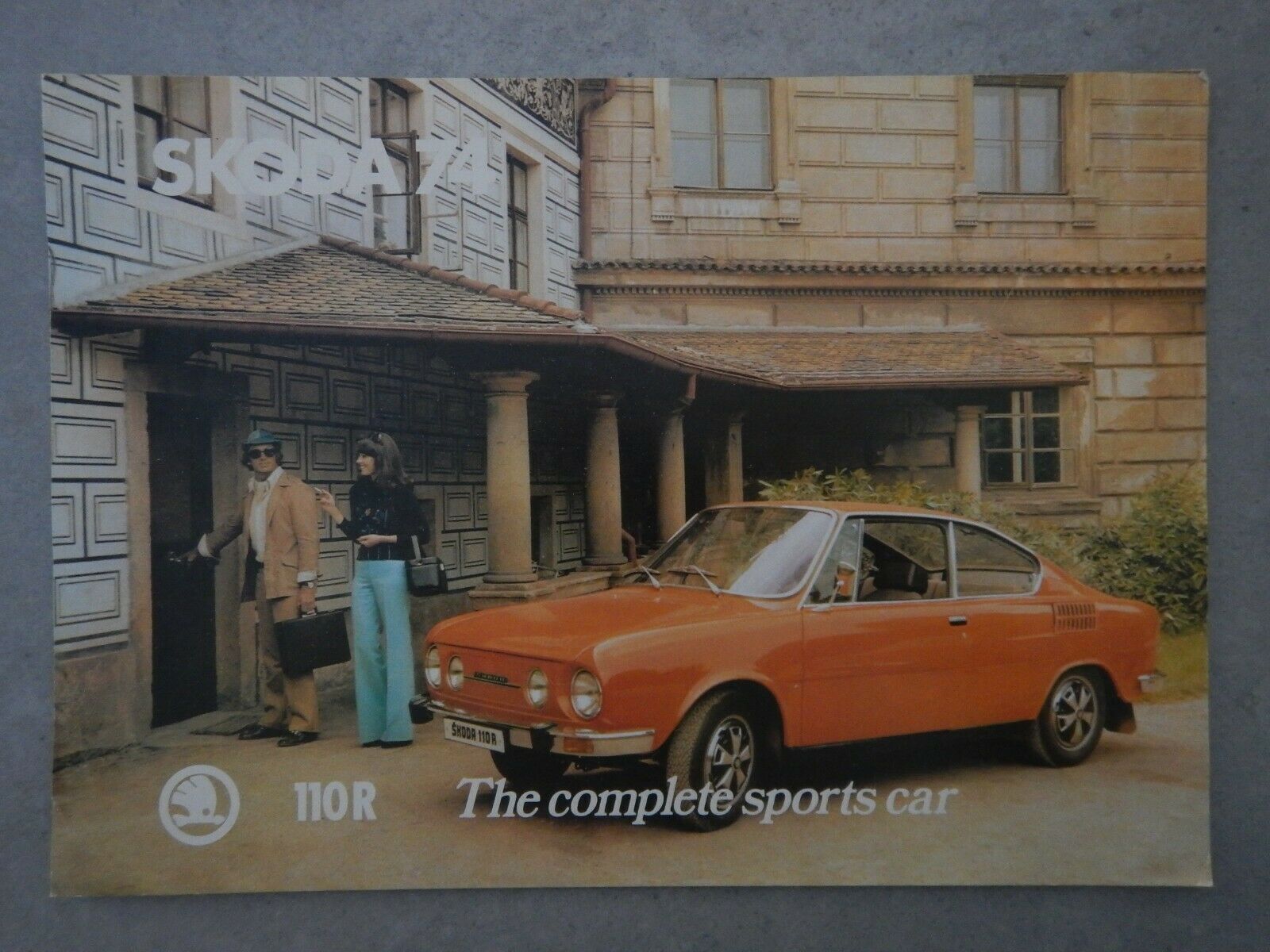
Meanwhile, in 1976, Skoda introduced the new Estelle. It had been hoped that a front-wheel-drive model could be developed, but permission was not forthcoming and the Estelle was essentially a rebodying of the old design, with a front-mounted radiator and slightly larger versions of the two existing engines at 1046cc and 1177cc. The 14" wheels and hubcaps were carried over, as were the front and rear bumpers, but the styling was entirely different and quite contemporary.
Unfortunately the handling and roadholding were, if anything, even worse than hitherto and certainly no better. Even the venerable Volkswagen Beetle had seen a number of developments to improve stability over the years, latterly with the 1302 and 1303 models, themselves largely extinct (the 1303 Cabriolet would continue to 1980), so the introduction of a 'new' model with such tricky road behaviour at this stage in history was met with a predictably negative reaction from the motoring press. It was described as being downright dangerous, particularly in the hands of the inexperienced driver. Such was the condemnation in the UK, that Skoda GB employed the Automobile Association's chief engineer, Marcus Jacobson, to carry out a program of improvement, resulting in the launch of the 'Super Estelle' in 1978.
Out with the 14" wheels, which were replaced by wide-rim 13" wheels fitted with UK-sourced radial tyres. Spring and damper settings were also revised. The result was a considerably more stable car. Although not without the typical behaviour of a rear-engined, swing-axled car when pushed to the limit, the Estelle was now much more predictable and controllable.
I owned two early Estelles with the 14" wheels, a 105L and 120L, both in light yellow and both 1977 cars. They really were a handful! Before I discuss the joys of motoring in those, I must go back to about 1974, when I had a dealer demonstration of a brand-new Skoda S110 saloon, in Kenton, Middlesex. At that time I was used to driving a variety of old, mostly British cars, usually in lamentably decayed condition, which were all I could afford at the time. I might well have been using a £20 Ford Classic on the day in question.
The Skoda, being a new car, should have impressed me. What I recall is a great deal of noise from the engine-driven, rear-mounted radiator fan, a somewhat imprecise gearchange and the way the rear wheels 'weighted-up' just going round a roundabout at a fairly modest speed on that bright, dry day. I could feel the inherent instability.
Returning now to 1984, when I bought my 105L with only 39000 miles for £350 from a friend; I was delighted with it. It was the newest car I had ever owned and I found it comfortable and generally pretty good to drive. The gearchange took some practice, but for a 1046cc, 46bhp, family-sized car it went well. There were boom periods, where the body vibrated in tune with the engine, which I later discovered to be the sheet steel beneath the cardboard rear shelf, but cruising at 60mph or so was fine. The 120L acquired soon after, and owned concurrently, was certainly livelier and sweeter-running. Both cars were highly entertaining on corners and bends, it being very easy to slide the rear end at remarkably modest speeds, even in the dry. In the wet, I used to describe it as being 'like a hammer on the end of a piece of string', which was something I'd heard someone else say! Suffice to say that rear-end breakaway was often sudden, savage and only barely retrievable. I had plenty of practice and became expert at getting the most out of either car. On one occasion, I was driving home on a flat Lincolnshire A-road behind a Rover SD1, which was being driven rather carefully. We were on a straight section of single-carriageway road approaching a 45 degree bend. There was sufficiently little vegetation that I could see across the bend to the next straight section of road and there was nothing approaching. Mustering all 46bhp, I shot past the Rover on the outside of the bend on opposite lock, before neatly tucking back in to my own side of the road with no fishtailing whatever. Remember, this was a long time ago and I was young at the time. I later had a 6000-mile Estelle 130L, which had the semi-trailing arm suspension, engineered with a little help from Porsche, I believe. It also had a 5-speed gearbox, as did my final Estelle, a 120L-Five, which was back to swing-axles. Both cars were very entertaining. The latter cars were Estelle Twos and had rack and pinion steering and sloped front ends rather like the Escort MK3. I did have a plan to fit a 1600cc Subaru flat-4 into that last car, but the engine failed to materialise and it never happened. Oddly, most of the rear-engined Skodas had an aluminium alloy block and a cast iron cylinder head, although the final Rapid 135 and 136 models had alloy heads. The engine lived on through the Favorit and Felicia era and, expanded to 1.4-litres, saw service in the early Fabias, with muti-point fuel injection.
The picture below is of the S110R interior.
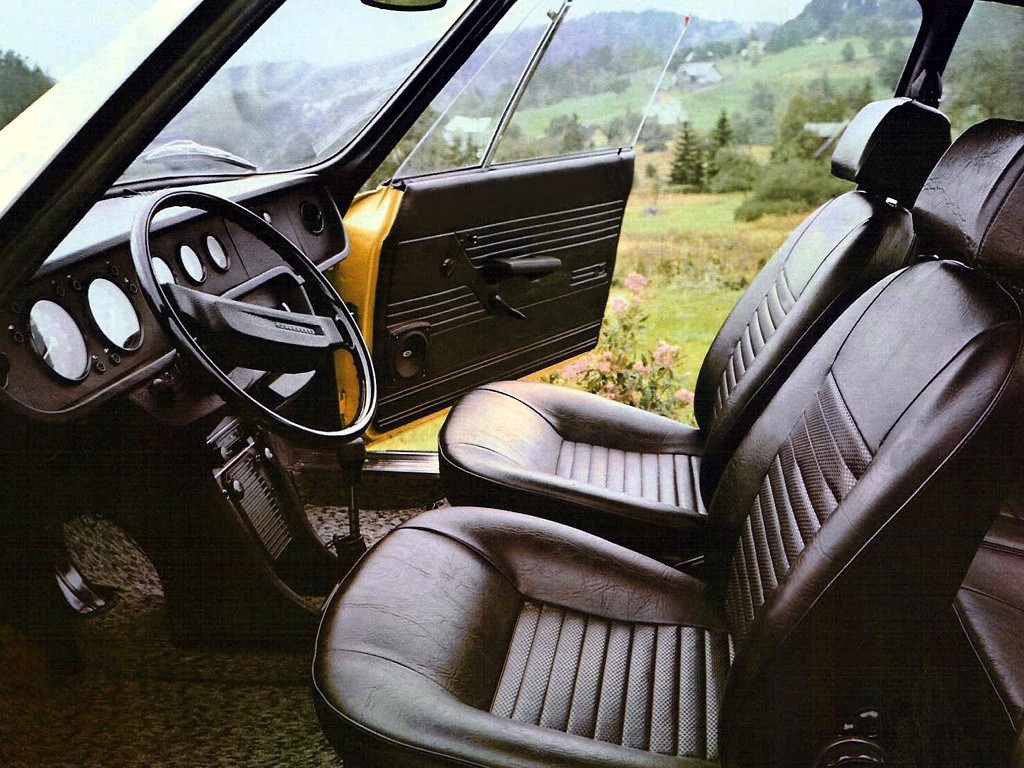
In conclusion, the 1000MB, shown at the top of this article and admired at the NEC, was absolutely beautiful and certainly one of the very best cars I saw all day. The communist-era Skodas were deeply flawed, but they had a style all of their own and they had real character. They were also surprisingly robust, economical and practical as everyday transport, which is part of the reason almost 3.6 million were sold.



